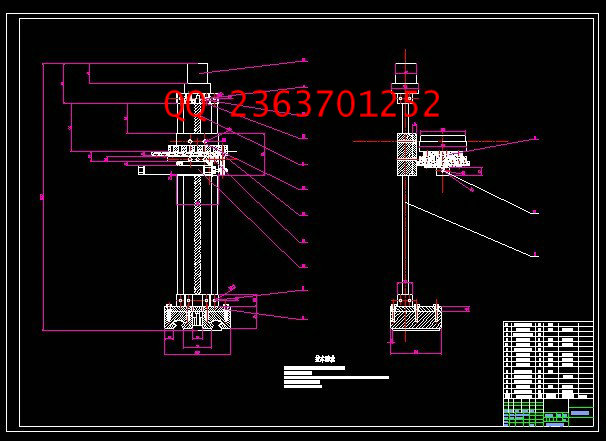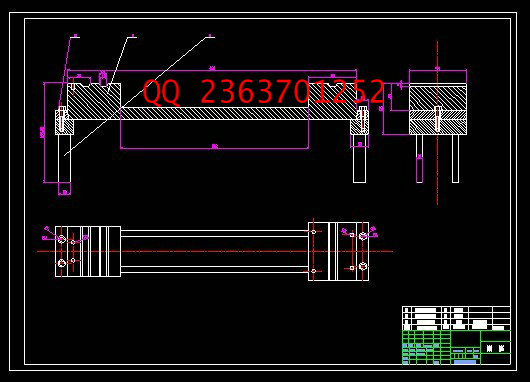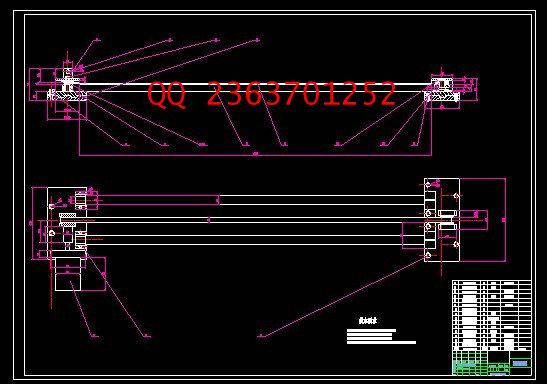|
设计描述:
文档包括:
设计word版本说明书一份,共39页,约20000字
CAD版本图纸,共4张
摘要
柔性制造系统(FMS)是一种形式的柔性自动化,把若干个机床联系在一起的一个材料处理系统,该系统的所有方面的控制都有一个中央电脑完成。这一系统减少了安装或转换时间和便利的生产小数目的产品。 转移的重点是从大规模生产的少数产品转化为车间作业的环境中定制订单产品。 自动化设计具备更好的质量和调度能力,使生产线可以快速变化,降低了库存和成本。
柔性制造系统具有灵活性的特点,他们的装置控制器和中央控制计算机可以复制出新的零件或改造旧零件。 他们也可以在同一时间内作出多项不同类型的零件。 然而,这种灵活性是有局限性的,以车轴为例,总体目标是增加灵活性,因此柔性制造系统相较于从前的制造系统更具有灵活性。
总体来说,柔性制造系统具备以下优势:更大的劳动生产率:只需要具有专门的教育和技能的较少的工人。更大的机械效率:产品的生产需要较少的及其楼面面积和空间。质量的提高:由于上线测试,使之能即时反馈信息和调整制造过程。增加了系统的可靠性:智能化,自诊断控制,为确定硬件问题减少了时间。减少了部分库存:柔性制造系统的一个主要特点就是柔性制造能力,在经济上容纳不同的一批大小、甚至下降至运行一个单一的部分。改进调度能力:容许这些快速反应的变化,在产品设计和生产调度,有能力,以符合刚刚在时间调度,并减少前置作业时间。 适应性的CAD\CAM行动:数码规格开发的电脑辅助设计/电脑辅助制造系统可以作为投入的过程。
作为一个柔性制造系统,必须具备的关键要素有:计算机控制,自动化材料处理能力,工具处理能力。柔性制造整合了自动化制造的概念:计算机数值控制个别机床,分布式数字控制的制造系统,自动化物料处理系统,成组技术。当这些自动化流程,机器和观念聚集在一个集成的系统,就是所谓的柔性制造系统。在柔性制造系统中,人类和计算机发挥主要作用。
关键字:柔性制造系统;灵活性;柔性制造能力;计算机控制
Abstract
A flexible manufacturing system (FMS) is a form of flexible automation in which several machine tools are linked together by a material-handling system, and all aspects of the system are controlled by a central computer.
Flexible manufacturing systems are flexible in the sense that their device controllers and central control computer can be reprogrammed to make new parts or old parts in new ways. They can also often make a number of different types of parts at the same time. However, this flexibility is limited to a certain family of parts, for example, axles. A general goal for designers is to increase flexibility, and advanced flexible manufacturing systems are more flexible than the earlier ones.This system reduces setup or changeover times and facilitates the production of differentiated products in small numbers. The shift in emphasis is from mass production of a few products to a job-shop environment in which customized orders are manufactured. Automation allows for better quality and scheduling, rapid changes in product lines, and lower inventories and costs.
Greater labor productivity. Fewer workers requiring specialized education and skills. Greater machine efficiency. Fewer machines, less floor space and less space for operator movement. Improved quality. Less waste because on-line gauging allows immediate feedback and adjustment of the manufacturing process. Increased system reliability. Intelligent, self-diagnosing controls decrease the time required to identify and correct hardware problems. Reduced parts inventories. A key feature of flexible manufacturing is its ability to economically accommodate different batch sizes - even down to a run of a single part. Improved scheduling capabilities. These allow rapid response to changes in product design and production scheduling, the ability to conform to just-in-time scheduling, and reduced lead times. Adaptability to CAD/CAM operations. The digital specifications developed by Computer Aided Design/Computer Aided Manufacturing systems can serve as inputs to the process.
The key elements necessary for a manufacturing system to qualify as an FMS are as follows:Computer controlautomated materials handling capabilityTool handling capabilityFlexible manufacturing integrates several automated manufacturing concepts:Computer numerical control (CNC) of individual machine toolsDistributed numerical control (DNC) of manufacturing systemsautomated materials handling systemsGroup technology (families of parts).When these automated processes, machines, and concepts are brought together in one integrated system, an FMS is the result. Humans and computers play major roles in an FMS.
Keywords: flexible manufacturing system, flexible, flexible manufacturing ability, Computer controlautomated materials
目录
摘要 (中文)……………………………………………………………………………………………Ⅰ
(英文)……………………………………………………………………………………………..Ⅱ
第一章 概述.........................................................................................................1
1.1 柔性制造系统以及起重机…………………………………………………………………....1
1.2 研究内容…………………………………………………………………………………………5
第二章 巷式起重机的结构设计.........................................................................8
2.1 步进电机的选择............................................................................................8
2.2 气动机构的选择...........................................................................................14
2.3 主轴轴承的配置...........................................................................................20
第三章 导轨的结构设计.....................................................................................24
3.1 导轨的作用和设计要求.................................................................................24
3.2 导轨设计的主要内容.....................................................................................24
3.3 导轨的结构设计............................................................................................24
第四章 PLC编程以及电路图............................................................................36
结束语....................................................................................................................39
参考文献................................................................................................................39
| 









